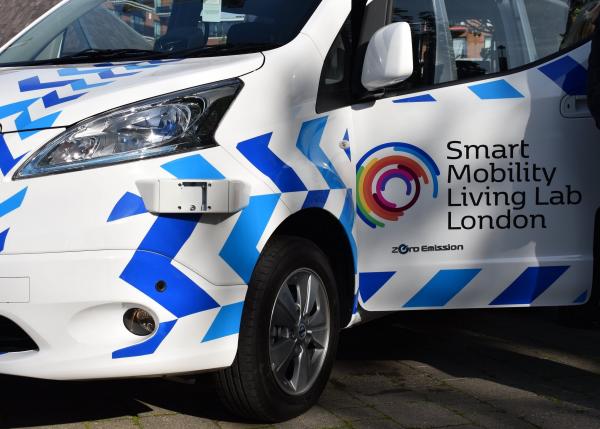Since the early 1970s, we’ve been scientifically evaluating the performance and safety of driverless vehicle technology . Today we continue to collaborate with industry, academia, government and regulatory bodies to put the UK at the forefront of connected automated mobility (CAM) research and development.
The CAV revolution is approaching
The coming transport revolution brings the challenge of disruption and the chance to seize new opportunities. A key benefit to society will be a reduction in road casualties. By 2030, CAVs could save more than 2,500 lives and prevent over 25,000 serious road accidents in the UK . They will enable air quality improvements and reduction in journey times. For people who struggle to access existing transport modes, they could bring the freedom to move around safely.
CAV trials are already taking place across the globe. But making driverless vehicles a reality in daily life presents complex challenges that may take another decade to overcome. Comprehensive testing, collaborative development and globally unified regulations are key.
Answering the big questions
The world of CAV isn’t just about vehicles, it’s also about the environment and infrastructure around them. From planning and design to implementation and infrastructure operation, the industry needs to review every aspect in order to support a connected and automated future safely and usefully.- Will vehicles be able to self-park and operate at service stations?
- Will they read road markings to navigate on roads?
- How many sensors do they need to move safely along winding rural roads or across steep bridges?
- How much do they rely on satellite navigation systems?
- Are they susceptible to cyber-attacks?
- Can CAVs be truly driverless?
Safety is paramount
Safety is a key concern for CAV users, manufacturers and regulators. Assuring it is a pre-requisite for commercial success. For every trial on a public road, a safety case must identify the risks, and describe how the risks will be controlled so no harm comes to people.
The case must include a safety assessment of the vehicle, trial route, safety driver and other route users. It also covers safety testing, compliance, insurance and stakeholder consultation and permissions. TRL is at the centre of learning and developing these criteria, helping to write the new British standards needed for safety assurance of CAV trials.
Once the trials are over, what happens once commercial CAVs are allowed on the road? The public and private sectors are coming together to set rigorous standards. Vehicle technology must be approved and regulated. Safety performance must be measured and monitored. These frameworks and stipulations will inform vehicle design standards and regulations.
Types and variants of CAVs
In the future, connected and automated vehicle technologies will converge, resulting in intelligent vehicles that are both connected and highly automated. But automated vehicles don’t necessarily need to be connected to each other or the infrastructure around them, and vice versa. Automation and connectivity can complement each other in ways that will lead to better vehicle safety performance. Similarly, not all CAVs are electric, and not all are shared services.
Connected vehicle technologies already exist. They enable vehicles to communicate and exchange data wirelessly. There is working infrastructure, for example eCall and satellite navigation. Automated vehicle technology is at an early stage, mainly focused on driver assistance systems. There’s huge potential to automate sensor technology (radar and liDAR sensors, and thermal cameras) which provides us with cruise control, autonomous emergency braking, lane keeping assistants and park assist. However, we’re still some years away from a vehicle that can drive entirely without human intervention on roads where other users are in traditional, human-controlled vehicles.
Leading innovation at TRL
TRL has a team of specialists with deep technical and applied expertise in every aspect of connected and automated vehicles. We can:- Measure and validate claims about vehicle performance and behaviours
- Establish standards and methods of regulation
- Understand the human factors that influence acceptance, adoption, and interaction with automated, connected and electric vehicles and their unique features
- Understand how these vehicles interact with existing or future multi-modal transport systems
- Work collaboratively with diverse stakeholders to help with the design of future technology, systems, services and infrastructure
- Build virtual validation models to accelerate development
- Apply machine learning and AI to complex data sources to derive new insights
- Create the evidence base for economic modelling and cost benefit analysis
- Offer facilities in the Smart Mobility Living Lab, London’s urban testbed for automated vehicle technologies
Relevant projects:
- EvolvAD
- ServCity
- HelmUK
- Endeavour
- Streetwise
- MOVE_UK
- Driven
- GATEway
- Zenzic CAMTestbedUK
- Future Transport Visions
- Attitudes to autonomous vehicles

